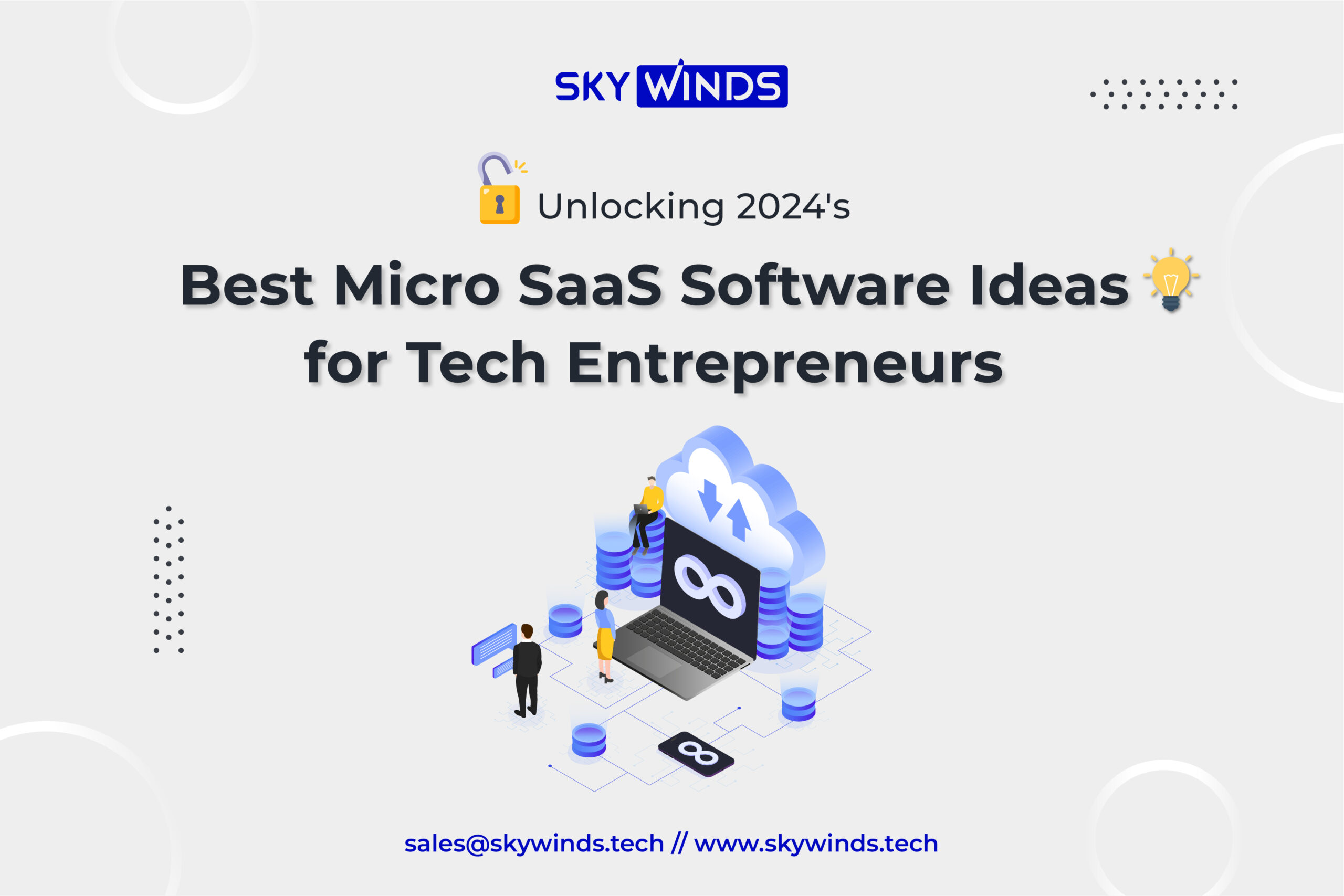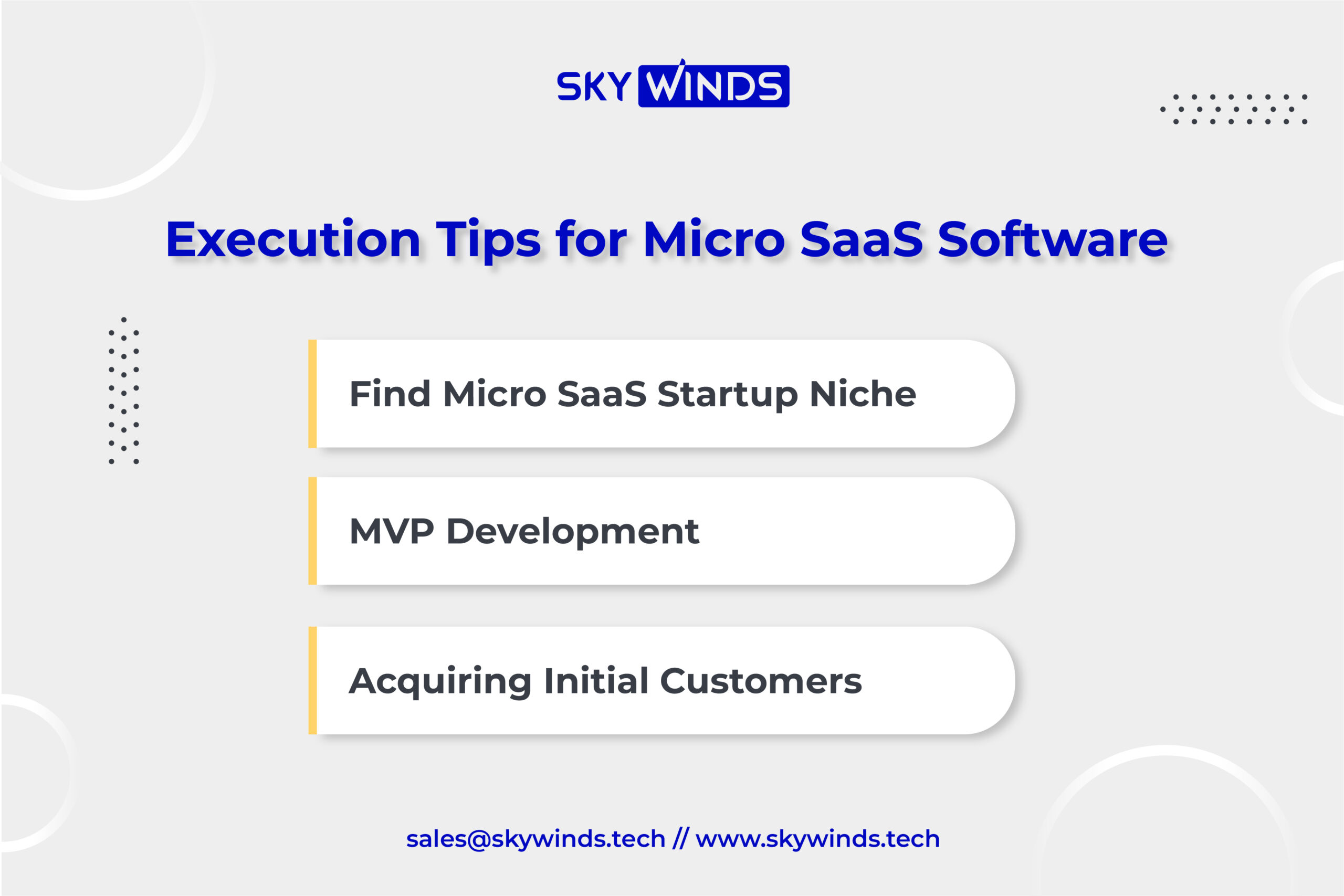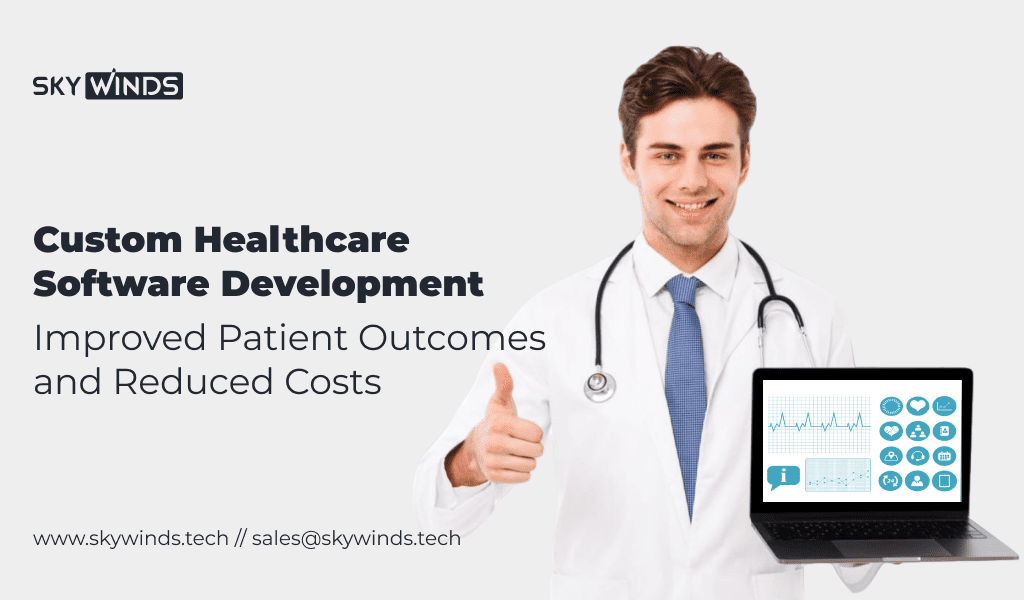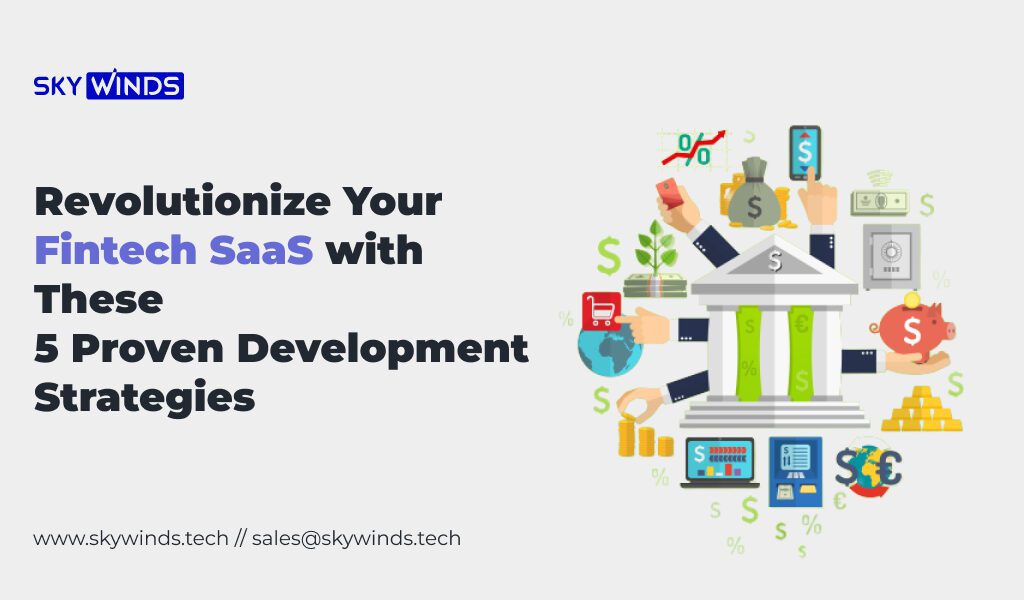
You have probably noticed the SaaS industry’s boom if you have been following the tech industry. Opportunities for entrepreneurs abound in a market projected to be valued $273.55 billion in 2023. This industry area is for you if you have a strong & growing interest to pursue entrepreneurship. Opportunities come in a variety of shapes and sizes, but one in particular seemed to have caught everyone’s attention. Given the rise of AI and the low-code/no-code tendencies, the Micro SaaS gold rush is as genuine as it gets. We’re going to take you on a Micro SaaS startup ecosystem where we’ll discuss opportunities for entrepreneurs, top 5 ideas for best Micro SaaS startup ideas of 2024 and execution tips. So, let’s dive into the details:
SaaS Industry Current Landscape and Growth Stats
Do you have any doubts about the profitability of this market? SaaS products are becoming popular for a reason. Here are some growth trends that will motivate you to develop one.
- The SaaS industry is expected to expand from $197 billion in 2021 to $232 billion by 2024.
- There are around 15 billion SaaS customers worldwide.
- The SaaS market is estimated to increase at a compound annual growth rate of 13.7% between 2023 and 2030.
Aside from the large market size and development potential, another reason to consider SaaS product ideas is the level of VC funding in this segment. Here are few examples:
- Icertis, a SaaS business, has raised $150 million in funding from Silicon Valley Bank.
- Zylo, a SaaS management platform for commercial customers, has raised $31.5 million in a fundraising round.
- Unito, a SaaS management platform, has raised $20 million in a Series B fundraising round.
- Slide, a Saudi Arabia-based firm, has raised $1.75 million in a pre-seed fundraising round.
- Bump, a Nigerian SaaS firm, has raised $4 million in its initial round.
Now that you understand investment activities, & market analysis of this industry, let’s look at some SaaS company ideas that will help you launch a successful venture in 2024.
SaaS Emerging Trends
User spending on SaaS goods exceeded $167 billion in 2022. The figure should reach $232 billion by 2024. Gartner expects 75% of companies will adopt cloud-based digital transformation by 2026.
Better-known SaaS ideas suggest that a good concept-niche fit is a lucky coincidence. The best SaaS product ideas come from tight demand and market analysis, which helps developers identify hot spots. Let’s discuss 2024 growth trends based on industry research and some notable success stories:
- Artificial Intelligence
Technological advancements like AI are prevalent in several forms, like TikTok filters, personalized song choices, and AI-generated emails. Many solutions, including SaaS firms, are adding the feature.
AI can help you launch your micro SaaS business ideas through fraud detection, personalization, innovation, customer service automation, and audience segmentation.
- Vertical SaaS Products
With their specialized solutions catered to particular industries or niches, verticalized SaaS products are becoming more and more popular. Market analysis says that businesses are choosing specialized platforms like Shopify for eCommerce over generic technologies. Shopify offers an extensive range of capabilities, tailored to the specific requirements of shops, such as inventory management, payment processing, and website creation.
See Also: Revolutionize Your Fintech SaaS with These 5 Proven Development Strategies
- Collaboration software
Global pandemic transformed work and communication forever. Unrubble found that 40% of Americans work remotely one day a week. Adobe and Airbnb left their premises and went remote.
Business leaders realized that a cell phone and email are not enough to motivate teams. This boosted collaborative software demand.
Teams use emerging players like Slack, Jira, ClickUp, Miro, and others to collaborate, share information, and manage projects. The market for remote SaaS collaboration tools remains open despite competition.
- MarTech tools
The challenge is not to create cool SaaS products but to promote your platform and attract a specific audience. Marketing Technology (MarTech) was a set of tools and methods utilized by past salespeople to promote their products. Example: product demo or cold calling.
Canva is a SaaS startup martech tool. The platform makes design and branding accessible to anyone, including SMEs.
Innovative Micro SaaS Startup Ideas

- Home Rental Platform
The idea is to create a mini SaaS platform that eliminates the need for agents and commission fees in the rental, sale, and purchase of real estate, hence revolutionizing the industry. Imagine a directory of properties where renters may communicate with landlords directly. The twist is that prospective buyers and tenants can create “wanted” postings with specifics about their preferences, which enables landlords to get in touch with them and make customized offers.
- Market Demand:
Cloud computing is still largely unexplored in the real estate business. Many people are aware of the difficulties in locating reasonably priced rental or buying choices without having to pay exorbitant agency fees. As a result, there is a rising need for SaaS solutions that automate the procedure and provide speedier and less expensive property access.
- Potential:
According to the EMR study, the global market for proptech, or the IT industry’s real estate sector, is expected to increase significantly and reach $26.5 billion in 2023—nearly twice as much as it did in 2018. With this kind of velocity, the promising markets will blow $104.81 billion by the end of 2032.
- App for Remote Marketing Team Management
Introducing a micro SaaS platform for marketing companies, offering task management, communication, scheduling, and interaction with ad campaign analytics tools. Without software, teams can easily set up and track campaigns with this app.
- Market Demand:
Remote work has been more prevalent since 2020, driving firms to seek effective methods for managing distant teams. Managers are using best SaaS management platform to connect and monitor remote workers due to their productivity and cost savings. Team communication and efficiency are improved via task boards.
- Potential:
Remote workers are projected to double from pre-pandemic levels to 16.8 million by 2025, according to the Future Workforce Report by economists. This expected growth indicates a growing need for remote collaboration and management software.
- Restaurant B2B Software
Consider a cloud-based B2B solution for restaurants, cafés, and coffee shops to streamline payments for food supply and other services. Restaurant managers can browse and order products from vendors and providers in a catalog. After ordering, clients pay a digital invoice and receive the goods quickly. Forget paper bills, phone orders, and long wait times.
- Market Demand:
Financial services are crucial for any economy, making a B2B solution like this in great demand. Since payments, transactions, and invoicing are essential for all businesses, the audience includes modest coffee shops and high-end restaurants. This constant demand makes finance technology a prime micro SaaS platform market.
- Potential:
The worldwide financial services market is projected to rise from $31.1 trillion in 2023 to $33.5 trillion in 2024, according to The Business Research Company. Increasing mobile device use for transactions, especially best SaaS products, drives this increase. This increase is driven by real-time money transfers, blockchain technology, digital banking, and cryptocurrencies. Financial services might reach $44.9 trillion by 2028.
See Also: Healthcare Tech SaaS: How to Build User-Friendly and Secure Solutions
- HR software
A SaaS HR platform was developed to enable recruiters to store resumes from various websites, contact with candidates, send offers and rejections, schedule appointments, and maintain application histories.
- Market Demand:
HR teams screen candidates daily on several marketplace portals. They screen them in chat rooms, messengers, and emails on those sites. They bookmark and download intriguing resumes on many sites. A cloud system could integrate various sources and streamline functions.
- Potential:
Globenewswire estimates the market for IT solutions for recruitment to be worth $2.78 billion in 2023. This sector will be worth $4.45 billion by 2028 if it grows 9.86% annually. Global talent management software sales are expected to rise from $9.05 billion in 2023 to $20.59 billion in 2030.
- Remote-Learning Platform
This intriguing micro SaaS solution makes remote learning and tutoring easy. Students can learn individually or in groups remotely. Live or pre-recorded lessons and courses can be taken on the app. You can create instructional content or assign it to platform teachers.
- Market Demand:
Best SaaS products and concepts entered school before 2020, but lockdowns made them indispensable. People desire high-quality education without leaving home, and cloud platforms may help.
- Potential:
Market Research Guru predicts the fastest-growing SaaS industry by 2031 will be education. Education SaaS, a subset of the wider SaaS market, is likely to rise due to EdTech and digital learning platform use. A CDW study of college presidents found that half plan to implement cloud technologies.
- Marketplace for Jobs
How do Toptal and Fiverr focus on IT services? We recommend another route. A website for stylists, financial consultants, and photographers, which are rare in such marketplaces, is a good micro SaaS idea. Study the freelancer industry to determine which market share needs representation on a distinct platform to identify your niche.
- Market Demand:
It’s hard to organize work alone. Freelancers must find clients, communicate with them on various platforms and messengers, remember deadlines, manage payments, and submit taxes. This can be simplified with cloud services. There are marketplace-type best SaaS software for freelancers, but the market is open to new ideas.
- Potential:
Research estimates the global freelancing software market would be valued $455 billion by 2023. Freelancers may make up 50.9% of the US workforce by 2027, making them an appealing market for SaaS application development.
See Also: The Fintech Revolution Unveiled: Statistics, Forecasts, and Market Trends That Will Shape the Future
- Automated Accounting Tool
Introducing a micro SaaS service for small firms and aspiring entrepreneurs who lack the budget for an accountant and struggle with financial management. System functions may include automated reporting, credit/debit control, and payment collection.
- Market Demand:
While not a novel SaaS solution, cloud bookkeeping software remains popular among businesses due to its ability to organize financial reporting and paper flow. To compete in this competitive market, one must target a specific customer category.
Startups, e-commerce, self-employed, and HoReCa firms might be targeted. These categories have diverse demands, therefore traditional solutions may not work. You can become a popular SaaS provider by offering a customized software with features your audience requires.
- Potential:
According to Fortune Business Insights, the market for automated accounting programmes and services, including SaaS applications, was worth $11 billion in 2018. It will reach $2.408 billion in 2026, rising 8.2% annually. Adding AI to your micro SaaS solution will boost your visibility. AI is projected to reach $6.62 billion in accounting by 2029, gaining 33.5%.
Monetizing Your Micro SaaS Product
Selecting the appropriate revenue model is essential to your Micro SaaS product’s profitability. Subscription-based business models are popular because they provide steady income and work well with SaaS products.
As an alternative, think about a freemium model that offers premium services for a fee along with basic ones for free. With time, this strategy can draw in a bigger user base and turn them into paying clients.
Investigate tier-based pricing schemes to serve various clientele groups. Make sure the model you select is in line with the value of your product and consumer demand.
Execution Tips

For executing your Micro SaaS startup successfully, here are some key tips:
- Find a Micro SaaS Startup Niche
Micro SaaS startups need the correct niche to succeed. It’s about finding a problem and creating a customized solution for a certain audience. You must uncover and understand potential clients’ particular pain areas.
Steps to Find and Validate Your Niche Research and Observation:
- Research and Observation: Participate in forums, industry events, and online communities to connect with your target market. Use Quora and Reddit to grasp current issues and find solution gaps.
- Finding Customer Issues: Use SurveyMonkey or interview your audience to understand their frustrations. These difficulties must be addressed accurately for your product to work.
- Market Analysis: Study your competition. SWOT analysis can reveal a unique gap your product can fill.
- MVP development
Build an MVP with enough features to satisfy early clients and get feedback for future development. Avoid feature overload by prioritizing core features that solve your product’s main problem.
- Acquiring Initial Customers
Like any other product, you must identify and optimize income streams once your MVP is ready for launch.
Here are some methods.
- Know your audience: With the right audience, Micro SaaS can dominate a niche. To build brand loyalty, pick a group your Micro SaaS products appeal to, analyze their pain areas, and promote your solution as the best fit.
- Price your product correctly: There are many pricing models and methods. All SaaS products should have pricing levels, free trials, and freemium models. Try as many models as possible and adjust your strategy to meet client needs and profit goals.
- Test upselling, add-ons, and cross-selling: Increase revenue by finding expansion prospects in your client base. Give them premium features to upgrade to more expensive plans or suggest similar goods to improve their experience.
- Prioritize retention: A prosperous Micro SaaS firm keeps clients as long as feasible. Your product must satisfy customers to keep them. Thus, complete as many customer support jobs as feasible and offer customized training.
- Assess your efforts: Multiple channels must be used to gather relevant insights to improve your procedures. Social media participation, consumer satisfaction surveys, market trends, and industry best practices should be examined.
Bring Your SaaS Idea to Life
Everything begins with a sound concept and the validation of your SaaS offering. Upon verification of market suitability and demand, you can start working on your cloud software.
Rather than going it alone, think about forming a partnership with a seasoned development team to benefit from their knowledge of planning, constructing, and expanding your program.
Full-service SaaS development is provided by ABC, which includes product research, MVP development, and enterprise-level software creation based on user requirements.
Let’s collaborate to develop your exciting SaaS concept into a successful product that wins customers over.

